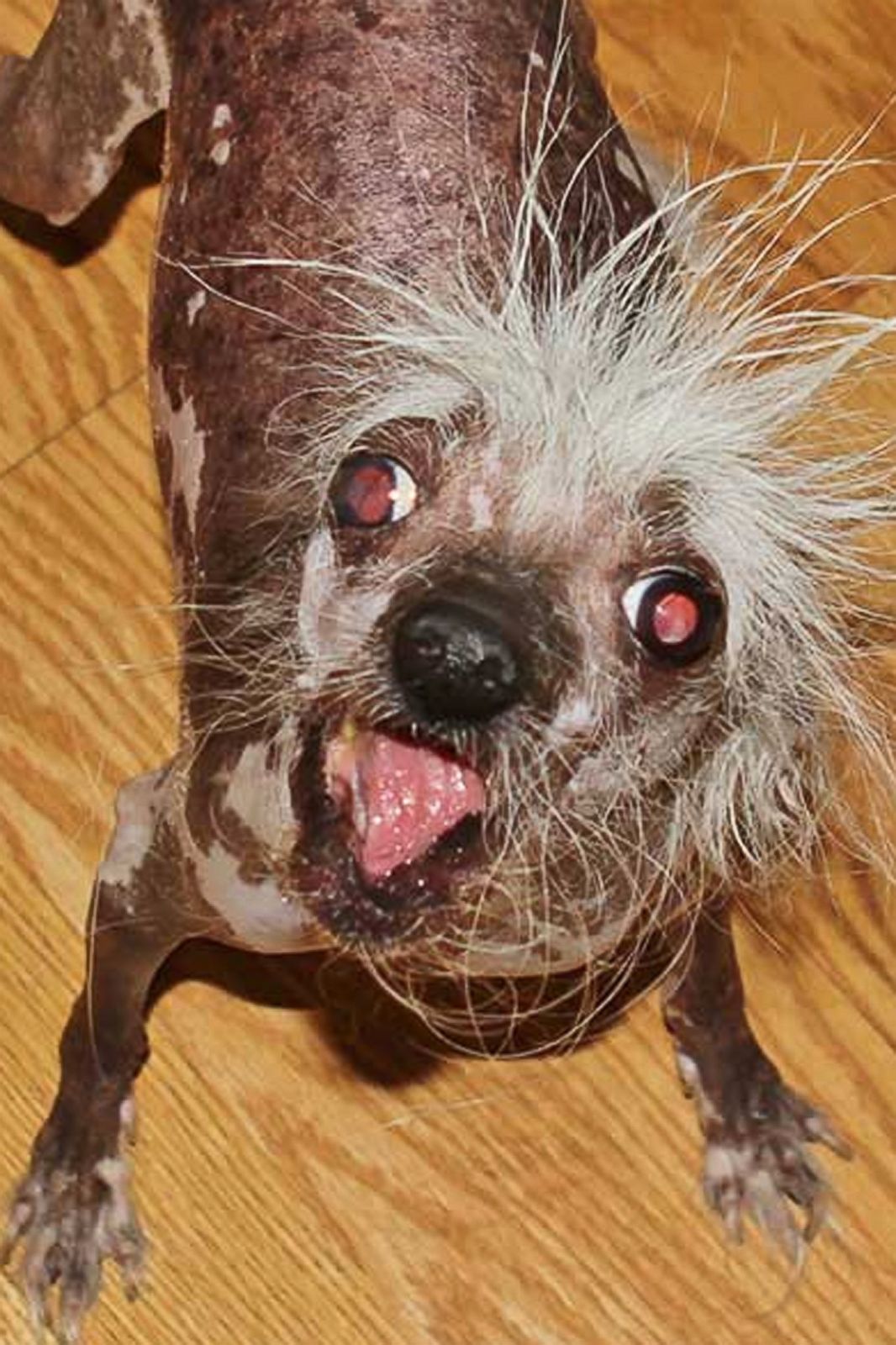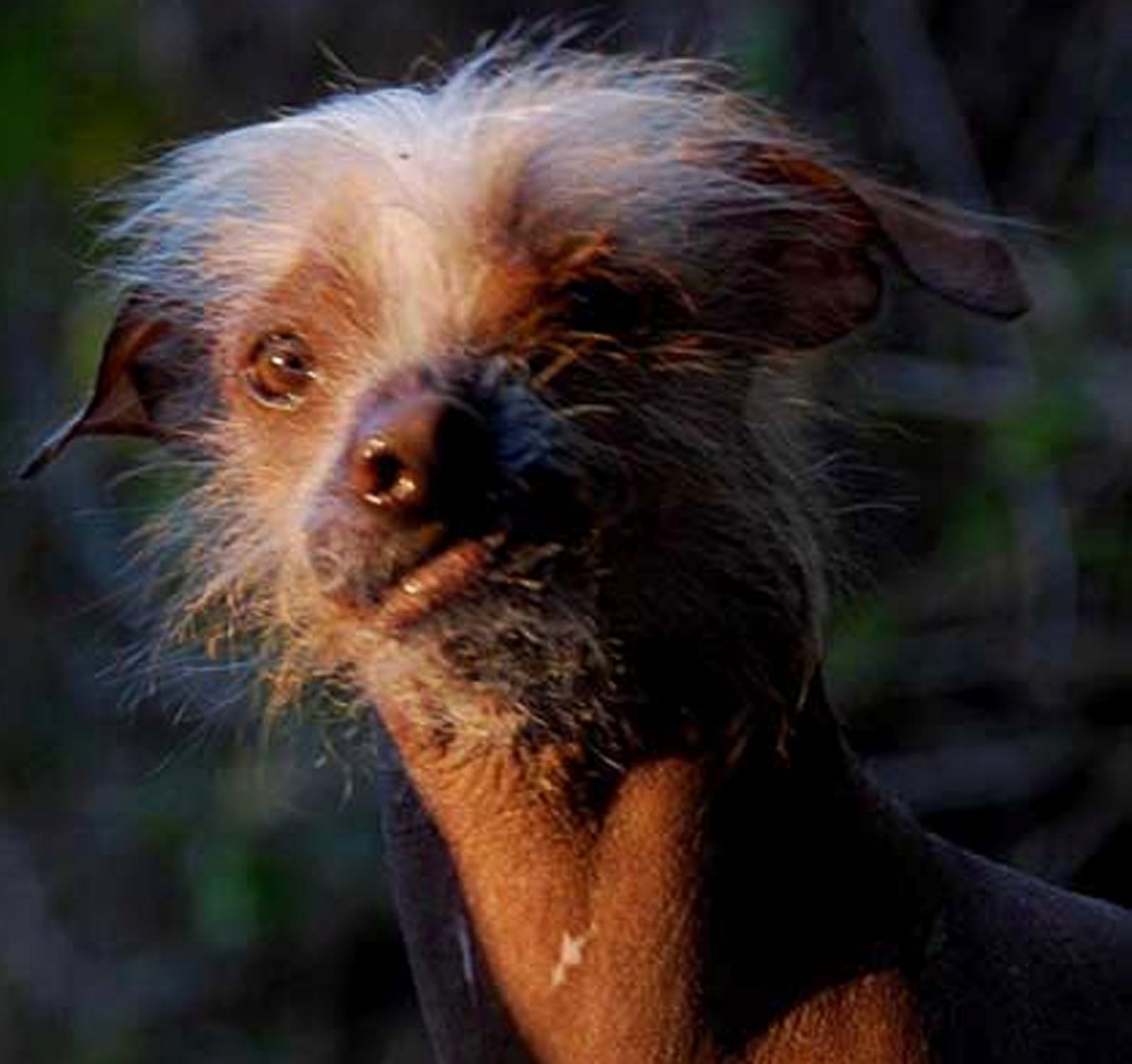Ugly Dog Pictures: Discover The Charm In Unconventional Canine Beauty
Ugly dog pictures have taken the world by storm, capturing hearts with their quirky, unique, and endearing appearances. These images celebrate imperfection and highlight the beauty in unconventional traits. From droopy faces to mismatched eyes, these dogs remind us that true beauty lies in individuality.
In recent years, the trend of celebrating "ugly" dogs has grown significantly, fueled by social media platforms and dedicated communities. This phenomenon showcases how embracing imperfections can lead to a deeper appreciation for the diverse characteristics that make each dog special. Whether it's a wrinkled face, a crooked smile, or an asymmetrical body, these dogs have found their place in the spotlight.
This article will explore the world of ugly dog pictures, delving into their origins, the science behind their appearance, and the cultural impact they've had. By the end, you'll understand why these dogs are far from ugly and instead are a celebration of canine diversity.
Read also:Exploring The Thomas Crane Library A Cultural And Educational Hub
Table of Contents
- Introduction to Ugly Dog Pictures
- The History of Ugly Dog Competitions
- Unique Physical Traits of Ugly Dogs
- Breeds Commonly Seen in Ugly Dog Pictures
- The Science Behind Ugly Dog Features
- Why Ugly Dog Pictures Are So Popular
- Cultural Impact of Ugly Dog Pictures
- Health Considerations for Ugly Dogs
- Tips for Owning an Ugly Dog
- Conclusion: Celebrating Canine Individuality
Introduction to Ugly Dog Pictures
Ugly dog pictures have become a cultural phenomenon, drawing attention to the unique and quirky features of dogs that defy traditional beauty standards. These images not only entertain but also encourage us to appreciate the beauty in imperfection.
While the term "ugly" might seem negative, it's used affectionately to describe dogs with distinctive characteristics. These dogs often have features that make them stand out, such as excessive wrinkles, bulging eyes, or mismatched fur patterns. Their charm lies in their individuality, and their pictures have gained immense popularity on social media platforms.
Ugly dog pictures remind us that beauty is subjective and that embracing diversity enriches our lives. This section will explore the origins of this trend and its evolution over time.
The History of Ugly Dog Competitions
Origins of Ugly Dog Contests
The concept of ugly dog competitions dates back to the 19th century, with the first documented event held in the 1890s in England. These contests were initially organized as novelty events at county fairs, attracting curious spectators and participants alike. Over time, they gained popularity, leading to the establishment of dedicated competitions worldwide.
Today, the World's Ugliest Dog Contest, held annually in Petaluma, California, is one of the most renowned events celebrating these unique canines. The competition draws entries from around the globe, highlighting the global appreciation for unconventional beauty.
Unique Physical Traits of Ugly Dogs
Characteristics That Make Dogs "Ugly"
Ugly dogs are characterized by a variety of distinctive traits that set them apart. Below are some common features:
Read also:How Do Roosters Fertilize Eggs A Comprehensive Guide
- Excessive wrinkles and folds, often seen in breeds like the Shar Pei and Pug.
- Bulging or sunken eyes, which can give a comical or exaggerated appearance.
- Mismatched fur patterns, such as uneven colors or patches.
- Crooked teeth or misaligned jaws, resulting in quirky smiles.
- Asymmetrical body shapes, including disproportionate heads or limbs.
These traits, while unusual, contribute to the charm and character of these dogs, making them beloved by many.
Breeds Commonly Seen in Ugly Dog Pictures
Popular Breeds for Ugly Dog Competitions
Certain breeds are more frequently featured in ugly dog pictures due to their distinct physical characteristics. Below are some of the most common breeds:
- Shar Pei: Known for their wrinkled skin and compact bodies.
- Pug: Famous for their squished faces and wide-eyed expressions.
- Bulldog: Characterized by their muscular build and droopy jowls.
- Basset Hound: Recognized for their long ears and droopy eyes.
- Neapolitan Mastiff: Known for their massive size and heavy wrinkles.
While these breeds are often associated with ugly dog pictures, mixed-breed dogs with unique features also frequently appear in these images.
The Science Behind Ugly Dog Features
Genetic Factors Influencing Ugly Dog Traits
The physical traits associated with ugly dogs are often the result of genetic factors. Selective breeding has played a significant role in shaping the appearance of certain breeds, emphasizing specific characteristics that make them stand out. For example:
- Wrinkles: Caused by excessive skin production, often seen in breeds like the Shar Pei.
- Bulging Eyes: Resulting from shallow eye sockets, common in brachycephalic breeds like Pugs and Bulldogs.
- Mismatched Fur Patterns: Caused by genetic mutations affecting pigmentation.
Understanding the science behind these traits helps us appreciate the complexity of canine genetics and the diversity it creates.
Why Ugly Dog Pictures Are So Popular
The Appeal of Unconventional Beauty
The popularity of ugly dog pictures can be attributed to several factors:
- Humor: The quirky features of these dogs often elicit laughter and amusement.
- Relatability: Their imperfections resonate with people who value authenticity and individuality.
- Emotional Connection: These dogs evoke empathy and affection, reminding us to embrace differences.
Social media platforms like Instagram and Twitter have played a crucial role in spreading the trend, allowing users to share and discover these delightful images.
Cultural Impact of Ugly Dog Pictures
Shifting Perceptions of Beauty
Ugly dog pictures have had a profound impact on cultural perceptions of beauty. By celebrating unconventional traits, they challenge traditional beauty standards and promote inclusivity. This movement encourages people to appreciate diversity in all forms, not just in dogs but in humans as well.
Moreover, these images have inspired artistic expressions, from memes to merchandise, further solidifying their place in popular culture.
Health Considerations for Ugly Dogs
Addressing Potential Health Issues
While ugly dogs are undeniably charming, their unique features can sometimes lead to health issues. For example:
- Respiratory Problems: Common in brachycephalic breeds due to their flattened faces.
- Eye Conditions: Bulging eyes are more prone to injury and infections.
- Skin Issues: Excessive wrinkles can trap moisture, leading to skin infections.
It's essential for owners to be aware of these potential challenges and take proactive measures to ensure their dogs' well-being.
Tips for Owning an Ugly Dog
Caring for Your Unique Companion
Owning an ugly dog requires special attention to their unique needs. Here are some tips to help you provide the best care:
- Regular veterinary check-ups to monitor for health issues.
- Proper grooming to prevent skin infections in wrinkled breeds.
- Creating a comfortable environment that accommodates their physical limitations.
- Providing mental stimulation and exercise tailored to their abilities.
By understanding and addressing their specific needs, you can ensure a happy and healthy life for your ugly dog.
Conclusion: Celebrating Canine Individuality
In conclusion, ugly dog pictures have transformed the way we perceive beauty in dogs. These images celebrate imperfection and highlight the charm in unconventional traits. From their unique physical characteristics to their cultural impact, ugly dogs remind us to embrace diversity and appreciate individuality.
We invite you to share your thoughts and experiences in the comments below. If you enjoyed this article, feel free to share it with fellow dog lovers and explore other fascinating topics on our website. Together, let's continue to celebrate the beauty of all dogs, no matter how "ugly" they may seem.
Data and references:
- World's Ugliest Dog Contest: https://www.worldsugliestdog.com
- Brachycephalic Syndrome: https://www.vetmed.ucdavis.edu
- Canine Genetics: https://www.ncbi.nlm.nih.gov

